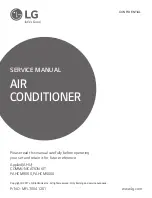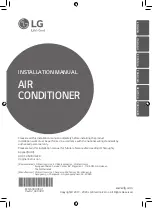
Daikin Applied (UK) Ltd.
REV A
– PAGE 9. SECTION 11 ADDED. 11/03/14
Page 32 of 37
be taken to ensure that the correct type of drain trap is used depending on whether it is
positive or negative air pressure within the heat exchanger section. Drain lines from the
trap must be pitched downwards, a slope of 1:25 is recommended. For details of drain
trap sizing for both types refer to drawing A4-500628.
Dampers
Where shut-off or face dampers are incorporated on the negative pressure side of the
fan, whether they are integral with the central plant or with associated ductwork, then
care must be taken to ensure that all the dampers can not be closed at the same time
while the fan is operating.
Installation
When connecting ductwork to dampers take care to ensure that the damper casing is
not twisted by the ductwork. Also ensure that any fixing hardware does not penetrate
the cog housing of the damper as this may affect the damper mechanism.
Ductwork must be independently supported and should not be left to hang from the
damper. Sealing should be in the form of a neoprene strip.
Ensure actuator rotation is correct in relation to blade location to prevent breaking
linkages.
Maintenance
At six (6) month intervals disconnect the blade actuator and check for freedom of blade
movement. Lubricate linkages, bearings etc where necessary.
Filters
COSHH Regulations
The components of filters are inherently safe, but changing air filters could expose
operators to a 'Nuisance Dust' hazard. We would therefore recommend that filter
changing be carried out by maintenance personnel wearing simple dust masks, eye
protection, overalls or protective clothing and gloves. Dirty filters should be sealed into
plastic bags for disposal.
Disposable Filters
These are supplied in the forms of panel and bag filters and are fitted into steel or
aluminium channel runners. Filters are simply withdrawn through the access door by
sliding the filter along the channel runner.
Filter Maintenance






































